Queen Christina of Sweden, Lesbian Troublemaker
Christina of Sweden was trouble, right from the moment she was born. Her parents had no surviving children, and her mother Maria was desperate to give King Gustavus a son.
The only legitimate heirs to the throne of Sweden at the time were the King of Poland and his sons, and Sweden had been at war with Poland for the last 26 years.
Though women could inherit the Swedish throne, it would definitely be easier for a man.
Maria was delighted on the 18th December 1626 when the midwives told her she had just given birth to a healthy baby boy, and the news was immediately rushed to the King.
It was the King’s sister Catherine who then had to bring him the news that there had been a mistake, by wordlessly walking up to him with the princess naked in her arms. The King laughed, and said:
“She’ll be a clever one, she’s fooled all of us!”
Why it was thought that Christina was a boy is unclear. The most common reason given at the time was that she was “hairy”, [1] though her “big nose” and “deep voice” are also cited. There’s some modern speculation that she might have been intersex to some degree, but whether that’s the case or not is impossible to tell. [2]
Her father took the news of having a daughter reasonably well, but Queen Maria was much less sanguine. Her mental instability was well known, so the news was kept from her for her own good. It was several days before she found out the truth, and it’s reported that when she realised she tried to attack Christina, shouting:
“Instead of a son, I am given a daughter, dark and ugly, with a great nose and black eyes. Take her from me, I will not have such a monster!”

This division between her parents defined Christina’s early childhood. Her father decided that if she was his heir then he would make the best of it, and ensured that she was brought up as befitted the role.
So it was that from an early age she was involved in as many “masculine” pursuits as she was “feminine” ones, and her father was an enthusiastic part of that.
On the other hand her mother was barely involved in her life at all, leaving her to be raised by her aunt Catherine.
Another important figure in her life was Axel Oxenstierna, her father’s Chancellor and most trusted counsellor. In 1632 these people became even more important in her life when her father was killed fighting in the Thirty Years War.
The death of Gustavus sent shockwaves throughout Europe. The war had pitted the Protestant nations against the Catholic ones, and Gustavus had been an important and popular leader on the Protestant side.
Chancellor Oxenstierna knew that solid leadership was vital, and so he knew that he had to ensure Queen Maria was kept away from the regency. This was made easier by the effect that Gustavus’ death had on her already fragile mind.
She had accompanied the army and returned to Sweden with his embalmed body, which she refused to allow them to bury. Instead she laid it out in state in a room lit only by candlelight, with windows blockaded by black velvet. Christina was forced to join her in this twilight existence until the Queen was finally persuaded to relent in 1634 and let her husband be buried.
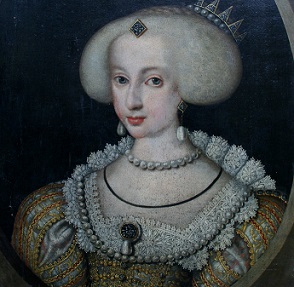
By the time Maria came out of seclusion Chancellor Oxenstierna had firmly consolidated himself in the Regency council. He had taken advantage of the break in authority to put forward Sweden’s first constitution. This limited some of the monarch’s power, and passed some of it to a Privy Council (headed by Oxenstierna, of course).
Maria then turned her attention to Christina, and distressed her to such an extent that the council were forced to exile her from the capital.
Christina was once again raised by her aunt Catherine (as her father had directed) until she passed away in 1636. She was considered a great loss – though ineligible for the throne (her line had been disinherited) she had still served the kingdom faithfully.
After her death Oxenstierna decided to have Christina raised by a succession of temporary foster-parents, in order to ensure the Queen-to-be would not play favourites.
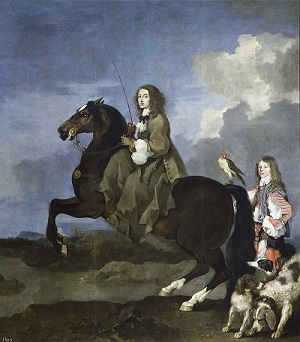
Christina’s education was a highly extensive one for anyone at the time, and doubly so for a woman. She studied art, philosophy, languages (including Hebrew and Arabic) as well as ballet to improve her grace and poise.
It’s hard to think that she enjoyed the latter very much, as she was always somewhat contemptuous of “feminine” things. She probably preferred fencing, which she learnt along with horsemanship and tactics.
All of this moulded her into the person she became.
From an early age Christina made her distaste for the idea of marriage obvious. She didn’t lack for suitors – there’s a rumour that her cousin Charles Gustav tried to persuade her to marry him, for example. She wasn’t exactly attractive – she wore men’s clothing, and had a talent for missing social nuances. [3]
She had (as her mother had noticed) a big nose, and had one shoulder higher than the other as a result of a broken (and badly healed) collarbone as a child. But she was intelligent and passionate, and could be charming when she wanted to be. In other words, she was trouble waiting to happen.
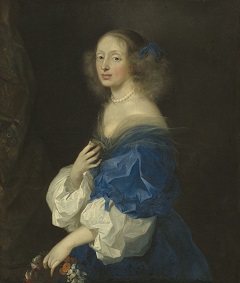
Two major events happened in 1644.
The first was that Christina turned 18, which meant that she was officially considered an adult. She began to take on some of the responsibilities of reigning, though Sweden’s ongoing war with Denmark meant that her coronation was delayed.
The second was that she met a young woman named Ebba Sparre. The fifteen year old Ebba was the daughter of a political family who had been sent to become Christina’s handmaiden.
Ebba was very beautiful, and Christina became infatuated with her. She called her “Belle”, and often praised her beauty to visiting diplomats. Christina’s surviving letters make it clear that her passion for “la belle comtesse” went beyond the platonic, though how much Ebba returned these feelings (and how physical their relationship was) is hard to say.
Christina even interfered in Ebba’s marriage, choosing her husband as someone who would keep her close to the court. Christina had two other favourite handmaidens – Jane Ruthven, the daughter of an exiled Scottish royalist general, and Louise van der Nooth, the step-daughter of a baron. Neither were ever as favoured as “Belle”, though.
As Queen, Christina had two main priorities. Peace for Sweden, and to make Stockholm the cultural capital of northern Europe. Both laudable aims, but neither entirely realistic.
With the Thirty Years War burning across Europe, Sweden was not going to be permitted to sit on the sidelines. Their conflict with Denmark was just part of a larger picture, one Christina chose not to care about.
This brought her into conflict with Chancellor Oxenstierna in 1645, when he sent his son Johan to negotiate on behalf of Sweden at peace talks in Ostenbruck. Johan was ordered to see that unless Sweden got a good deal then the war should continue, but Christina sent along her own delegate to ensure that peace was secured at any cost. In the end, the talks were successful and the wars came to an end.
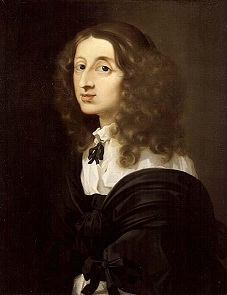
Christina’s cultural efforts were less successful. She had a theatre created in one of her palaces and appointed the Swedish scholar Georg Stiernhelm as court poet. In response he wrote several plays for her, and Christina herself performed (for private audiences) in two of them.
She attracted foreign scholars to the court, and her greatest coup was in attracting the philosopher Rene Descartes to Stockholm to start an academy.
The plan failed however, for three reasons. Firstly, because Descartes and Queen Christina turned out to dislike each other intensely. Secondly, because the cold climate led the elderly philosopher to catch a chill that turned into pneumonia and killed him. And thirdly, because Sweden couldn’t afford to fund it. The foreign scholars mostly drifted away, and the dream died. [4]
The real crisis of Christina’s reign, however, turned out to be marriage and succession. Her council took it for granted that the Queen would marry and produce an heir. Christina, however, had no interest in marriage or men in general.
She took as her example the English queen Elizabeth, and pointed out that by marrying she would effectively be handing over rulership to her husband. The council diplomatically didn’t point out that to them that was a large part of the point. This meant that Christina’s solution of making her cousin Charles Gustav her heir wasn’t sufficient to satisfy them.
Things were still at an impasse in 1650 when Christina was finally officially crowned Queen.
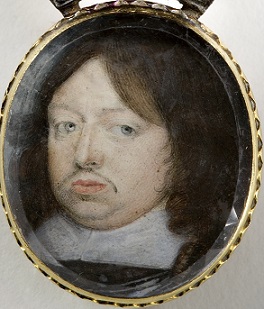
Though she was now Queen, Christina still sat uneasily on the throne. A new crisis began to develop in 1651 when rumours began to swirl that she was considering converting to Catholicism.
The terms of the treaty at Ostenbruck five years earlier had been that the religion of the ruler would determine the religion of the country, and the Catholic Church had responded by targeting rulers and heirs for conversion. [5]
The secretary of the Portuguese ambassador was a learned man and a Jesuit, and he and the Queen had many discussions about philosophy and science. He passed her curiosity back on to his order, and as a result two more Jesuit scholars came to Stockholm in disguise. They also met with the Queen. By May of 1652 Christina had made up her mind to become a Catholic.
The Queen’s sexuality and views on marriage had been problematic for the council, but neither would have proved insurmountable. Her new religious feeling however – those would be an issue.
The council were, like Sweden, for the most part staunch Lutherans and had no wish to change that. It was probably over religion that they first began to discuss her abdication. There were contributing factors, including the effect that the workload of being monarch was having on her health, but the end result was the same.
On the 6th June 1654, in a public ceremony, Queen Christina abdicated the throne of Sweden. The members of her council formally removed her regalia, but Count Per Brahe, who was supposed to remove her crown, couldn’t bring himself to do it. Christina removed the crown herself, giving up power with her own two hands.
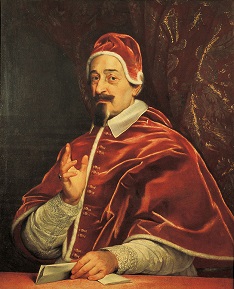
Initially Christina retired to live in Holland, an allied country. This did mean traveling across Denmark, which she did disguised as a man. In fact now that she was free of the strictures of monarchy, men’s clothing became her normal garb.
She settled in Antwerp, where she threw herself into the social life of the city – holding parties, going to see plays and concerts, and generally having a good time.
She did formally convert to Catholicism, but she didn’t publicly announce it for fear the Swedish government (under new king Charles Gustav) would stop paying her pension. Her money began to run short anyway though, and so in September of 1655 she accepted a proposition from the Pope – publicly avow Catholicism, and then become his guest in Rome.
Bringing Christina to Rome was a notorious triumph for Pope Alexander VII. It was a triumph in another sense as well – Christina entered the cities of Italy like a victorious Roman general of old. She toured through a half dozen of them before finally entering into Rome on the 20th of December.
The gate through which she entered the city had a new facade added by the great sculptor Bernini to commemorate the occasion, and he also designed her coach for the procession. (Christina and Bernini went on to become life-long friends as a result.)
Two days after entering the city, she was confirmed as a Catholic by the Pope himself [3] and given the confirmation name of Alexandra after the Pope. She was the centre of attention at the Papal court for the next few months, and afterwards she held regular salons in the palace she was lodged in. For the woman who had dreamed of this type of bohemian lifestyle, it was a dream come true.
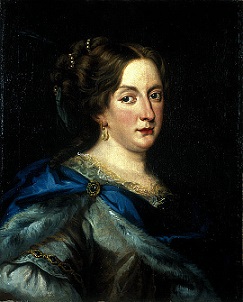
Of course, Christina was aware that this could not go on forever. Her conversion meant that her financial support from Sweden could be drastically cut, and she could not rely on the support of the Pope forever.
She cast her eye around the Mediterranean, and soon spotted an opening for which she was uniquely qualified – that of Queen. Queen of Naples, to be precise. The kingdom had been disputed between the French and Spanish dominions since the 15th century, and at the moment Spain was in the ascendant there.
France had officially given up their claim in 1559, but in practice that simply meant that they had switched to encouraging Neapolitan independence from Spain. Christina’s proposal was simple – that the French should conquer the island and install her as Queen, and that on her death she would bequeath the crown to France.
It was an audacious plan, and frankly almost certainly unworkable. But Christina was convinced it could happen.
In the summer of 1656 she traveled to Paris, in order to discuss the plan with the French. If they had been seriously considering it, then they may have had second thoughts when they met her. Her male dress and manners scandalised the French court, though others were fascinated by the freedom of her self-expression.
By the time she left she had reached an agreement with Queen Anne (mother of and regent for the thirteen year old Louis XIV). France would support her – at least on paper. (In practice, they may have just planned to use her to weaken the Spanish.)
On her way out of the country she paid a visit to famous free-thinker and libertine Ninon de l’Enclos [7] who had been imprisoned in a convent at the order of the Queen due to her outspoken atheism. What passed between the two women is unknown, but following the meeting Christina used her influence to ensure that Ninon was released.
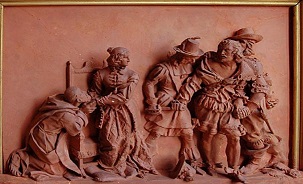
Though Christina had the French pledge of support, it didn’t translate into action anywhere near fast enough for her. The following year she returned to France to try to speed things up.
While staying at the Château de Fontainebleau just outside Paris she made a shocking discovery. One of her most trusted servants, an Italian nobleman named Gian Monaldeschi, had been secretly sending copies of all her letters to the Pope. She confronted him with the evidence, and then ordered her guards to execute him as a traitor. Though he tried to flee, they chased him through the hallways of the palace and stabbed him to death.
Under French law as Monaldeschi’s superior in rank Christina was perfectly entitled to do what she did. In practice it proved massively unpopular. It ended French support for her adventure in Naples, and Monaldeschi’s family had enough influence in Rome to ensure that her name was mud by the time she returned to the city.
The most common story in the city became that Monaldeschi had been her lover, and that she had killed him when he complained of her unfaithfulness. When she finally returned to the city in 1658, her reputation was in tatters.
Christina made two final attempts to involve herself in continental politics. In 1660 when her heir Charles Gustav died she returned to Sweden, positing that as she had abdicated in his favour specifically then his death should make her Queen again. However her new religion meant that would never be accepted, and instead she wound up renouncing the throne again in order to secure her income.
She also tried to visit her “Belle” while she was in the country, but the Sparre family blocked it.
Her last play for a throne came in 1668 when John Casimir II of Poland abdicated. Poland had an elective monarchy, and through her mother Christina was eligible for it. As a Catholic candidate she had the support of the Pope, but she was defeated by the native Pole Michael I.
On the 22nd of November 1668 she returned to Rome for the last time.

Christina’s reputation had improved a bit, though she was still considered a barbarian and outcast by the nobles of Rome.
Rather than run from that, she embraced it and became the closest thing to a counter-culture leader that the 17th century Holy City had. She founded the city’s first public theatre since classical times, and when a new Pope forced it to close she held performances in her palace.
The Pope forbade women performers, but Christina gleefully ignored his rules. She spoke out on behalf of the Jews of the city (who faced regular ritualized humiliation from the Church) [8] and pressured the Pope into issuing an edict forbidding the chasing of them through the streets during carnivals.
She promoted free-thinking, and often supported those theologians who fell afoul of the church orthodoxy. And she was, of course, a notable patron of the arts just as she had always wished to be.
Christina spent over 20 years as the queen of Rome’s underground scene and thorn in the side of the establishment, but in 1689 at the age of 62 she fell ill and died. She had asked for a simple funeral, but the Pope decided that such a notable convert deserved to be honoured (and that he deserved to get one more publicity coup out of her).
She was embalmed and displayed for public mourning for four days, and then she was given a funeral and rites suitable for a dead pope. She was even buried in the same Vatican graveyard as the popes – one of only three women in history to be so honored. A monument to her, erected in memory of her contribution to the culture of the city of Rome, stands in St Peter’s Basilica to this day.
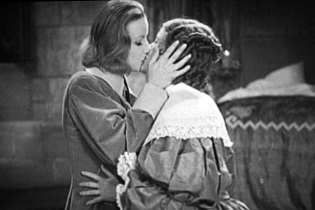
Christina was not forgotten after her death.
Sweden remembered her as the Queen who gave up the throne, Rome remembered her as the patron of the arts, and France remembered her as a murderous foreign noblewoman.
The drama of her abdication inspired no less than four operas, as well as multiple novels and plays. It was even the subject of a Greta Garbo movie in 1933. The Hays Office made sure producer Louis B Mayer knew that any overt reference to her sexuality wouldn’t be tolerated, so he had to give her a male love interest as the “real” reason she abdicates.
Others were more open to her unconventional sexual identity, and just as in life she became a fixture of the counterculture.
Though a 1965 exhumation of Christina’s bones found no positive evidence that she was intersex, it’s undeniable that she wasn’t a normal woman of the period. And like Benedetta Carlini, she served as a reminder to many women (and men) that throughout history there had always been people like them – people who didn’t fit into the narrow boundaries of society and gender.
Like all of us, she was what she was made, but unlike so many people of the time she had the freedom to actually be who she really was. We’ll never know how many people through history have been denied that chance.
Pictures via wikimedia except where stated.
[1] “Hairy babies” are not that unusual. All babies grow hair in the womb, but most shed it before they are born. A rare few do not but will shed it shortly after birth.
[2] There are mentions in the records by her physicians of her menstruating, which would rule out some but not all intersex manifestations.
[3] Which has led to some retroactive diagnosis (always risky) that she may have had a mild Autism Spectrum Disorder.
[4] It wasn’t a total failure – the homegrown talent like Stiernhelm stayed and proved to be a great contribution to Swedish culture.
[5] The most successful targets of this were the exiled children of King Charles of England, Charles and James. James did fully convert to Catholicism before becoming King of England, though this actually led to a successful coup to overthrow him.
[6] One of the Holy Sacraments of the Catholic church, for any non-Catholics reading.
[7] Ninon is often incorrectly described as a courtesan, as she never married and took many wealthy men of the day as her lovers. In fact she was always ferociously proud of not needing to rely on them for support and instead supported herself through her writing.
[8] Part of the Papal inauguration ceremony involved the chief rabbi of Rome presenting him with a beautifully hand-written Torah as a symbol of the two religion’s shared heritage. The new Pope would then throw it into the mud as a symbol of Christianity superseding Judaism.
